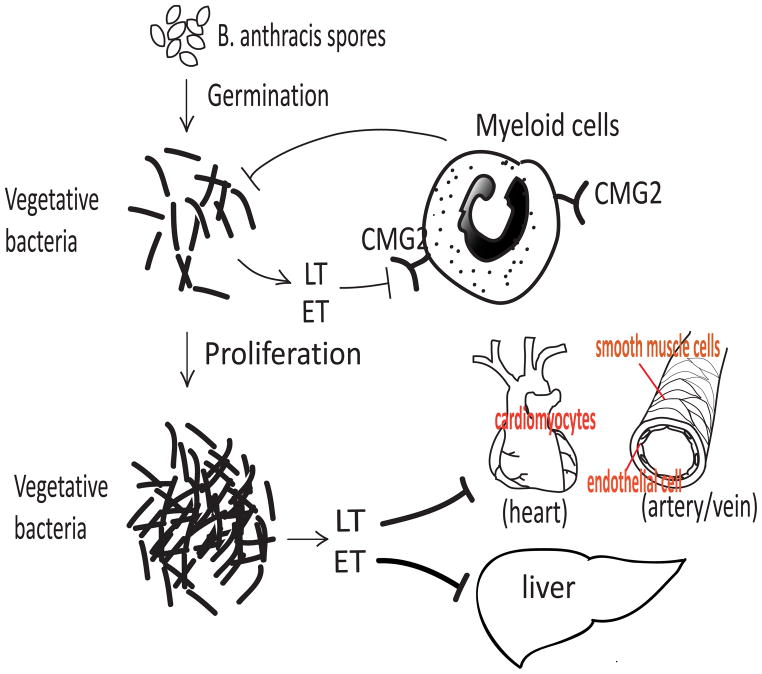Figure 2.
The roles of anthrax toxins in infection. Upon entering a host through various routes, B. anthracis spores may germinate locally or be carried to local lymph nodes and germinate there. The vegetative bacteria then secrete lethal toxin (LT = PA + LF) and edema toxin (ET = PA + EF), which act through binding to CMG2 receptors to incapacitate the scavenger functions of myeloid cells (such as neutrophils and macrophages). This allows the expanding population of vegetative bacteria to evade the powerful anti-bacterial functions of neutrophils and macrophages. At late stages, following dissemination and establishment of a systemic infection, B. anthracis multiplies to high numbers in the blood, producing sufficient amounts of LT and ET to cause host mortality. LT causes host lethality through targeting the cardiovascular system, in particular cardiomyocytes and vascular smooth muscle cells, whereas ET induces lethality mostly by targeting hepatocytes.

